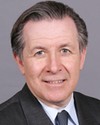You used two words that I thought were exceptionally descriptive. You referred to “traditional” veterans, those who might have been involved in the Second World War. We have only three from the First World War left, but then there's Korea. And some of the earlier peacekeeping missions, I suppose, would include what you might call traditional veterans. Then there are the “modern-day” veterans, those who have left the forces in say the last ten years or so.
Could you characterize whether they really make up two distinct groups in terms of their needs? I'm thinking of an uncle of mine who was hurt in 1942-43, just within weeks of being in training camp. He was 17 or 18. He was too shy to speak up, so he continued, injured. Now he's 80, and that knee has troubled him all his life. I wonder if for the people leaving the services now there's better record keeping and less shyness on the part of younger recruits to speak up.
I'm wondering if we're dealing with two different mindsets--from the traditional veteran versus the modern-day veteran--and if that would impact an ombudsman's work.

